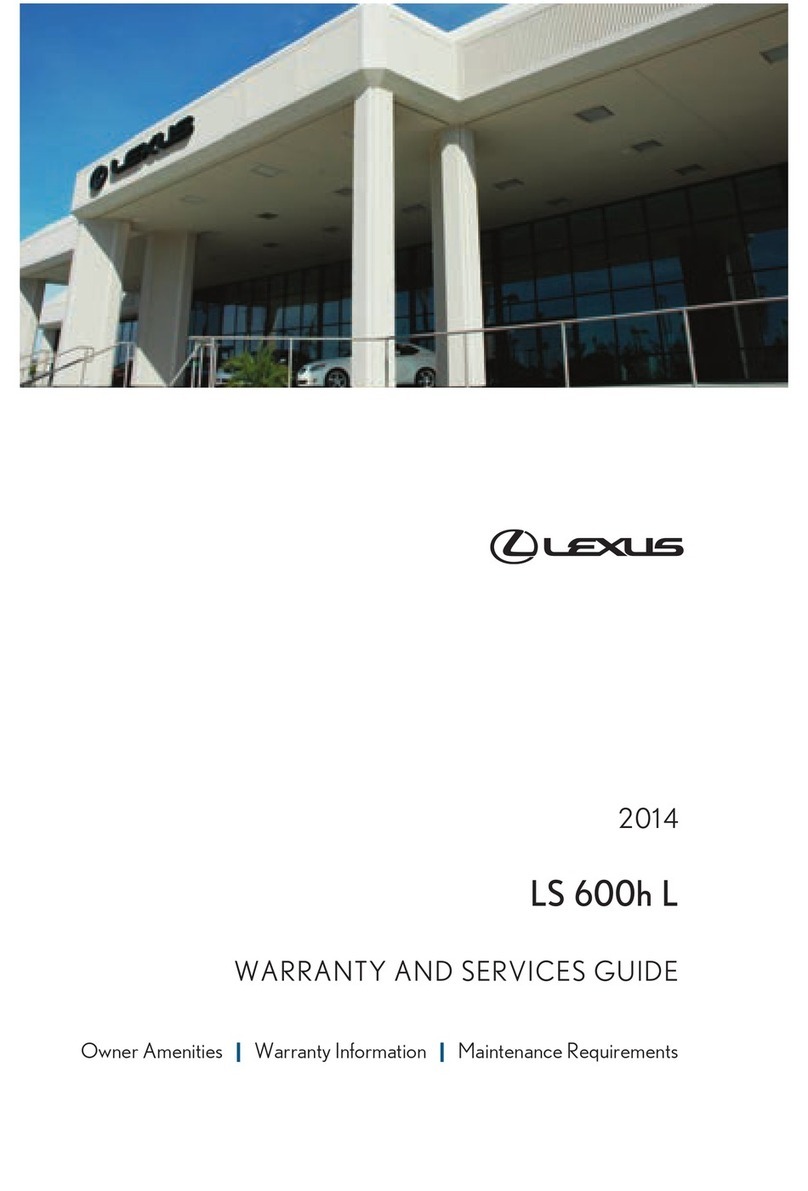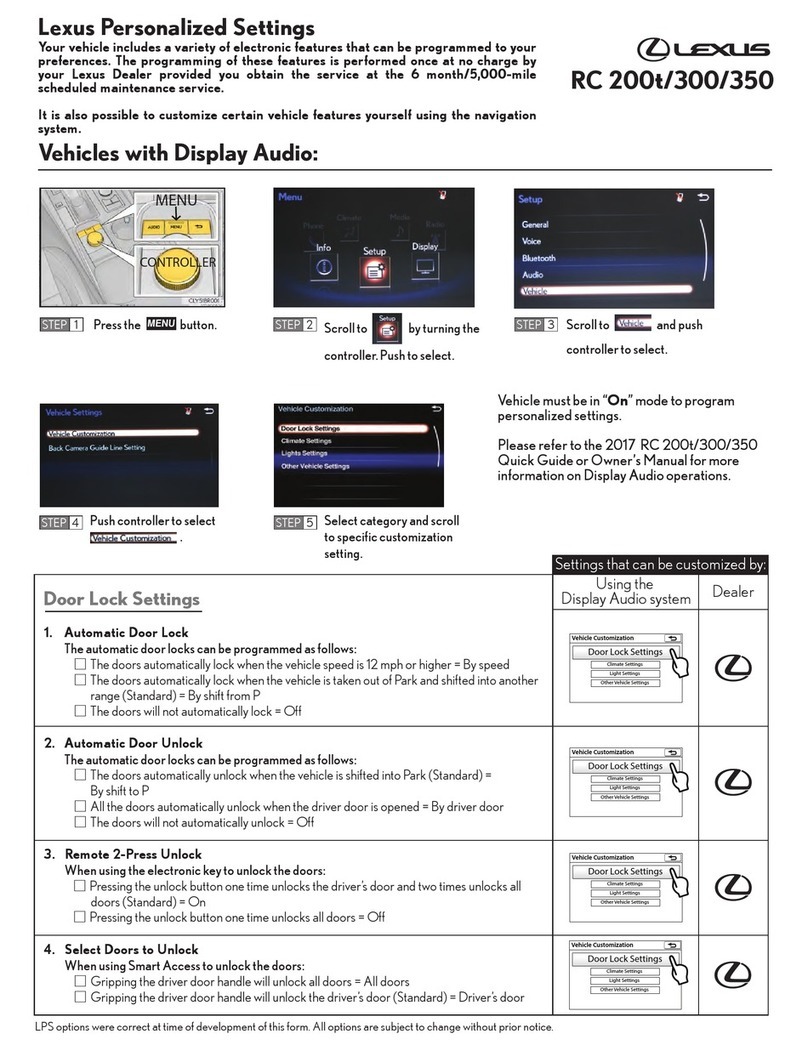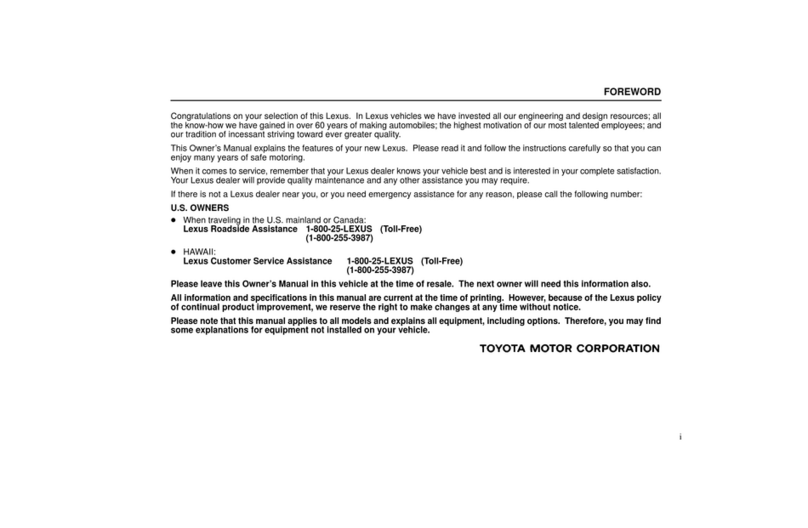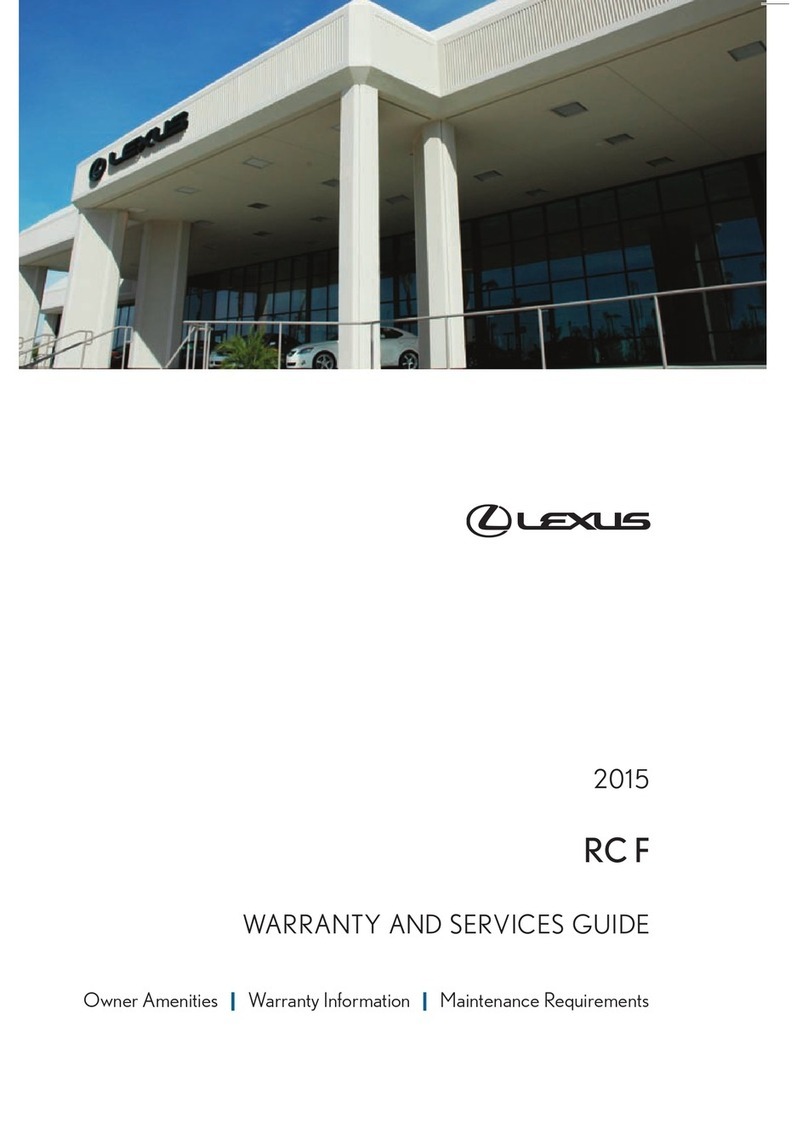2008-2009 Model Year LS 600h L 2010 Model Year LS 600h L
F
-i-
oreword
This LS600h L gasoline-electric hybrid Emergency Response Guide
has been revised to include the changes of the 2010 model year LS600h
L. These changes include minor updates to the vehicle exterior and
interior. The important changes affecting the emergency responder are
the reshaped high voltage battery pack and the addition of pyrotechnic
front seat active headrests. The LS 600h L hybrid introduced in May
2007 continues to share the basic vehicle systems and features of the
conventional, non-hybrid, Lexus LS 460 L.
High voltage electricity powers the electric motor, generator, A/C
compressor, and power control unit (inverter/converter). Other
automotive electrical devices such as the horn, radio, and gauges are
powered from a separate 12 Volt auxiliary battery. Numerous
safeguards have been designed into the LS 600h L to help ensure the
high voltage, approximately 288 Volt, Nickel Metal Hydride (NiMH)
Hybrid Vehicle (HV) battery pack is kept safe and secure in an accident.
The LS 600h L utilizes the following electrical systems:
• Maximum 650 Volts AC
• Nominal 288 Volts DC
• Maximum 46 Volts AC / DC
• Nominal 12 Volts DC
LS 600h L Features:
• A mechanical all-wheel drive hybrid powertrain.
• A boost converter in the power control unit that boosts to 650 Volts
the available voltage to the electric motor.
• A high voltage Hybrid Vehicle (HV) battery pack rated at 288 Volts.
• A high voltage motor driven Air Conditioning (A/C) compressor
rated at 288 Volts.
• An Electric Power Steering (EPS) assist motor rated at 46 Volts.
• Active stabilizer suspension system motors rated at 46 Volts.
• A body electrical system rated at 12 Volts, negative chassis ground.
• Supplemental Restraint System (SRS) - dual stage frontal airbags,
front knee airbags, front seat and optional rear seat side airbags,
side curtain airbags, front and rear seat belt pretensioners, and when
equipped with an optional rear seat Ottoman, a passenger side rear
seat cushion airbag.
• Active headrests for the front seats (2010 model only)
High voltage electrical safety is an important factor in the emergency
handling of the LS 600h L Lexus Hybrid Drive. It is important to
recognize and understand the disabling procedures and warnings
throughout the guide.
Additional topics in the guide include:
• Lexus LS 600h L identification.
• Major Lexus Hybrid Drive component locations and descriptions.
• Extrication, fire, recovery, and additional emergency response
information.
• Roadside assistance information.
This guide is intended to assist emergency responders in the safe
handling of a Lexus LS 600h L hybrid vehicle during an incident.
NOTE:
Emergency Response Guides for Lexus hybrid vehicles may be viewed at
http://techinfo.lexus.com.



















































